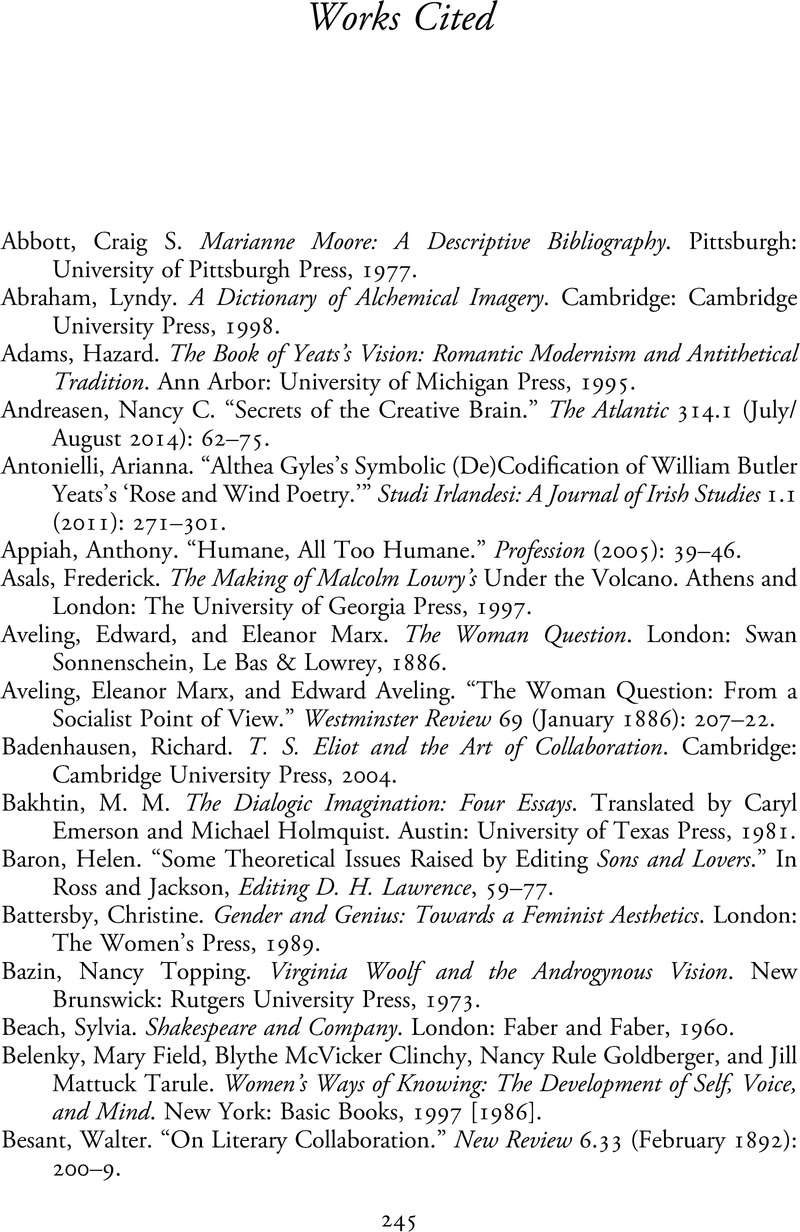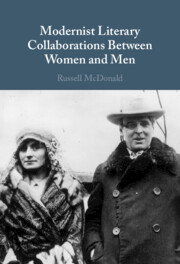Book contents
- Modernist Literary Collaborations Between Women and Men
- Modernist Literary Collaborations Between Women and Men
- Copyright page
- Dedication
- Contents
- Figures
- Acknowledgments
- Abbreviations
- Introduction
- Chapter 1 Imagining Two as One: Collaboration and the Discourse of Sex Relations in Early Modernism
- Chapter 2 The Discord Aesthetic in D. H. Lawrence’s Collaborations with Women
- Chapter 3 “The Fight to Be Affectionate”: Textual Intimacy and the Drive to Animate Marriage
- Chapter 4 “The Yolk and White of the One Shell”: Modernism’s Androgynous Textual Bodies
- Chapter 5 Conclusion: Being a Genius Together
- Notes
- Works Cited
- Index
- References
Works Cited
Published online by Cambridge University Press: 20 October 2022
- Modernist Literary Collaborations Between Women and Men
- Modernist Literary Collaborations Between Women and Men
- Copyright page
- Dedication
- Contents
- Figures
- Acknowledgments
- Abbreviations
- Introduction
- Chapter 1 Imagining Two as One: Collaboration and the Discourse of Sex Relations in Early Modernism
- Chapter 2 The Discord Aesthetic in D. H. Lawrence’s Collaborations with Women
- Chapter 3 “The Fight to Be Affectionate”: Textual Intimacy and the Drive to Animate Marriage
- Chapter 4 “The Yolk and White of the One Shell”: Modernism’s Androgynous Textual Bodies
- Chapter 5 Conclusion: Being a Genius Together
- Notes
- Works Cited
- Index
- References
Summary

- Type
- Chapter
- Information
- Modernist Literary Collaborations between Women and Men , pp. 245 - 259Publisher: Cambridge University PressPrint publication year: 2022

